Content
Having tried to keep quails and made sure that their breeding is not so difficult, some quail breeders begin to think about a quail farm as a business.
At first glance, the quail business is quite profitable. A quail hatching egg costs from 15 rubles apiece, a food egg costs 2-5 rubles. for one egg. At the same time, the content of nutrients in a quail egg is several times higher than in a chicken egg, although the size is smaller and there is no cholesterol at all.
Quail carcasses are also not very cheap and reach 250 rubles. a piece. And they eat very little quail, as the advertisement says. Quails, weighing about 250 g, eat only 30 g of feed per day. Is it true, laying hensweighing one and a half kilograms require 100 g of feed per day.
Quails take up little space, do not require walking, and can be placed in an extension to the house on your site.
The popularity of quail products is growing. But few people wonder why, with its growing popularity, the shelves are still not filled with quail meat and eggs.
Why aren’t they overwhelmed if it’s so profitable and convenient?
You can try to do the math and draw up a preliminary business plan for quail breeding. Of course, it won’t be a full-fledged one, since prices vary in the regions.
Quail breeding as a business
The proposed business must be legal, because the products must be sold somewhere. And to sell food you will need a veterinary certificate, at a minimum.
What kind of livestock can be kept without registering a poultry farm? Is 500 quails a lot or a little? How about 1000? Let's look at SNiP. It turns out that in order to register buildings as a quail farm (more precisely, a separate poultry house), the buildings must be located at a distance of at least 100 meters from residential buildings. This distance is called the sanitary protection zone.
A green zone of tree plantations should be established on the border of the territory. Prepare money to buy trees.
For any livestock farm, a manure collector must be built - a pit concreted around the perimeter with a closing lid. Depending on the amount of manure, the pit may be open on one side and have a sloping floor to allow a truck to be driven in and loaded with accumulated manure.
Such a volume of a manure collector is unlikely to be needed by a private quail breeder. But bird droppings belong to organic waste of hazard class III and the sanitary and epidemiological station together with the veterinary service will require the construction of a manure collector.Therefore, a private owner who wants to officially register a poultry house will have to either build a concrete pit or acquire a battery of plastic barrels for collecting droppings.
Ideally, you can find a place to sell fresh litter, show the official services a couple of barrels of litter and get by with little loss. But this is not possible everywhere.
The cost of a 200-liter used barrel is 900 rubles. The question is how quickly it will fill up.
If a quail eats 30-40 g of food per day, then its feces will weigh at least 10 g per day. We multiply by the estimated 1000 quail population and get 10 kg of litter per day. And this is only the main quail flock, without taking into account the raising of young animals. We add here 2000 young quails, which must be raised to replace the egg-bearing flock every 6 months. Until the main stock is replaced, these 2000 quails will eat and shit for 2 months. In 2 months, young quails produce 20x30x2=1200 kg. If we distribute this amount over 6 months, we get + 20 kg monthly. In total, you get 10x30+20=320 kg of litter per month. One and a half barrels. This will of course be seasonal. 4 months 300 kg each and the next two 900 kg each. So you will have to take at least 6 barrels. 6x900=5400 rub. If you take 6 more per shift, then another 5,400 rubles. with the condition of monthly removal.
Perhaps someone has options for instant disposal, but they will have to count on the worst.
There is no need to register the farm. The slaughterhouse is based on it. This will further increase the cost of buildings. So we consider the poultry house. By the way, the poultry house should also be located at a considerable distance from residential buildings.
Have you lost the desire to officially register this business? Actually, that's right.If raising quails was as profitable as most online articles make it out to be, people with money would have built quail poultry farms long ago. But people with money know how to count this money.
Let's try to consider a semi-underground version of the quail business. In this case, you need to worry about where to put the resulting products, although, by the way, after culling and providing the family with quail meat, there will not be much of this product left. Quail breeding as a business is relatively profitable in Ukraine, where you can negotiate the sale of products with small stall owners or develop your own clientele. It’s not without reason that if you look closely, most quail breeders are from Ukraine. In Russia, everything is much stricter with food enterprises, although, probably, you can also find those who want an “eco-product straight from the village” who will not be afraid to take untested eggs and meat. And even in Ukraine, quail breeding is not an industrial business, but a home business.
Quail breeding: is it profitable or not as a business?
This will be clarified below.
In principle, we figured out where to put the droppings. You still have to take care of this issue if you don’t want your neighbors to start writing complaints. Therefore, either a compost pit in the garden, or barrels with subsequent removal.
1000 quails is the amount that one family can handle.
What you need to keep these thousand quails:
- Room.
- Cages for the main herd and young animals.
- Feeders.
- Drinking bowls.
- Electrification of the premises.
- Incubator for 3000 quail eggs at a time.
- brooder for rearing there will be at least 2000 quails.
- Supplying heating to the room where quails are kept.
Feed and possible bedding (you can do without it) are consumables and are not yet taken into account in the main calculation.
Room
It is assumed that it exists, since the semi-underground business will be carried out in one’s own private home. Therefore, the cost of building a shed or extension to a house can be ignored.
Cells
Craftsmen can do Quail cages independently, but their cost will then depend on the cost of the materials used. Since the materials may vary, the exact price of such a cage cannot be given. You can only indicate that cages should be made at the rate of 70 quails per m².
To roughly estimate a business plan, it is better to use the cost of ready-made quail cages.
With a planned main flock of 1,000 quails, there should be 3,000 seats in the extension to accommodate replacement young stock.
The cheapest option in terms of 50 heads of quail is the KP-300-6ya cage battery. Price 17,200 rub. Holds 300 quails. 10 copies will be required. The final amount is 172 thousand rubles. Quail cages are supplied fully equipped, feeders and drinkers are included in the price.
Electrification of the premises
If the incubator and brooder are in another room, then for the quails you just need to run a wire. This is not difficult and will only result in the cost of the wire and light bulb socket. If the room is planned to be heated, you need to think about how to connect the heater.
Incubator for 3000 eggs at a time
Such an incubator for 1200 chicken eggs costs 86 thousand rubles. Very “smart”, almost with artificial intelligence, which greatly facilitates the work of the poultry farmer. Darling, yes.But for now we are counting to the maximum.
Brooder
Must be designed for 2500 quails. You will need a lot of brooders, since their capacity is small. The cost of a brooder for 150 quails, optimal in terms of the number of quails/price ratio, is 13,700 rubles. You will need 17 such brooders. Total amount: 233 thousand rubles. You may be able to get a discount for wholesale.
Heating
This point is inexpensive in terms of initial costs. If the walls are well insulated, it is enough to connect the wire for the heater and buy the heater itself. The question is the size of the room. For a small room, a fan heater may be suitable. The price of such heaters is up to 1000 rubles.
Total: 173000+86000+233000+1000= 492000 rub. for the original equipment. You can safely round up the amount to half a million, since various little things will probably be required.
Don't forget that this is the maximum.
How to make it cheaper
In general, all these fixed assets can be much cheaper if you know how to work with your hands. Quail cages and brooders are easy to make yourself. The only thing you have to spend money on is infrared lamps. The incubator is a little more difficult due to the fact that it is difficult to manually set the desired temperature and humidity. And turning eggs by hand 6 times a day won’t work at all. In this case, there is a possibility that all embryos will die. So it’s better not to skimp on the incubator and buy a really good one.
One infrared lamp for a brooder together with a ceramic cartridge will cost up to 300 rubles. How many of them are needed for brooders depends on the size of the brooders and the room temperature. 20 lamps will cost 6 thousand rubles.
Thus, you will have to spend about 150 thousand rubles on acquiring equipment.taking into account small items, materials and unforeseen expenses.
Purchase of livestock and feed
A quail hatching egg costs from 15 to 20 rubles apiece. Eggs will require about 3 thousand 20 rubles. An egg of a broiler breed of quail costs 15, and 15 for an egg breed. An Estonian quail egg (a medium-sized bird with good egg production) costs 20 rubles. The white Texas egg is the same amount.
1 option. For incubation you need to take 3000 eggs. 20x3000=60,000 rub.
Let's add electricity here.
Option 2. Day old chicks 40 rub. You need 2000 heads 40x2000=80,000 rubles.
No electricity is needed for incubation.
In both cases, starting feed will be required for cultivation. A 40 kg bag costs 1,400 rubles. You need to feed this type of food for up to a month. 30 g per bird will not be needed at first, but by a month they will already reach the daily norm, so on average you can calculate the need for feed as 1.5 bags per day. 1.5x1400x30= 63,000 rub. for feeding young animals. Some of the quail will be scattered, some will be fed within a couple of days after the month.
The cost of young quail per month will be:
- 60,000 + 63,000 =123,000 + electricity costs during incubation and in the brooder.
- 80,000 + 63,000 = 143,000 + electricity costs in the brooder.
Then another month on quail feed 1300 rubles. for 40 kg.
Consumption 1.5 bags per day.
1.5x1300x30=58500 rub.
We add two options:
123,000 + 58,500 = 181,500 rubles.
143,000 + 58,500 = 201,500 rubles.
In both cases, do not forget about the energy consumption for the incubator and brooder. During this month, only the costs for semi-twilight lighting in the sparrowhawk will increase, since monthly quails no longer need a brooder and can live in cages.
At 2 months, you can slaughter extra quails and sell the carcasses for an average of 200 rubles. (If there is a distribution channel.)
1000x200=200,000. That is, the costs of the main flock of quails and feed for it will be almost reimbursed.
But we must not forget that an ideal situation is now being simulated, when no one died and the planned number of young animals hatched from the eggs, and not less.
The third option for acquiring livestock
Young animals aged 50 days. The price for one quail is 150 rubles. At this age, it is already clear where the male is, where the female is, if the quail is of a “wild” color. “Colored” quails will have to look under their tails. But you can no longer collect extra quails and limit yourself to only the main herd.
1000x150 = 150,000 rub.
After 10 days and 7.5 bags of feed for 1,300 rubles each, that is, another 10,000 rubles, the quails will begin to lay eggs. And it will be possible to earn income.
On average, quails lay 200 eggs per year, that is, each quail lays an egg once every two days. If it's rude. In addition, due to any stress, quails may stop laying eggs for 2 weeks. But let's assume everything is perfect.
We took the herd with the expectation that we would obtain replacement young stock ourselves. That is, for every 4 quails in the herd there is 1 quail. Consequently, there are 800 quails in the herd and 400 eggs can be obtained from them per day. Food eggs will most likely cost 2 rubles.
400x2=800 rub. in a day.
During the same day, 30 kg of food will be eaten.
1300/40x30=975 rub.
Income: 800 rub.
Consumption: 975 rub.
Total: -175 rub.
But you will also need to set aside a percentage for the depreciation of fixed assets, that is, at a minimum, cages, an incubator and a brooder.
Conclusion: the production of food eggs with a full cycle of livestock reproduction is not profitable.
Production of edible eggs when buying an egg flock on the side
In this case, from the fixed assets you will only need cages and a lamp to illuminate the room. An incubator and brooder are not needed.
It will be necessary to buy only quails for the herd, since rushing They don’t even have cockerels, and we won’t breed them.
The cost of a quail population at the age of 50 days will be the same: 150,000 rubles, feed consumption for up to two months will result in 10,000 rubles.
Without cockerels, you can get 500 eggs from quails. in a day.
Income: 500x2=1000 rub.
Consumption: 975 rub.
Result: +25 rub.
At first glance, although small, it is a plus; you can at least break even. But here we need to remember about electricity and water bills.
At best, the result will be a real 0. Considering that again nothing can be put aside for the depreciation of the cages and the purchase of a new quail stock, the scheme is a failure.
Conclusion: the production of food eggs is unprofitable.
Quail for meat
In this case, you need to take broiler quail breeds. Whether it makes sense to keep broodstock is a complex question. The best broiler breed is Texas White. But quails of this breed are too apathetic and for high-quality fertilization of eggs per quail there should be only 2 quails. Thus, a broodstock of 1000 birds would consist of approximately 670 quail and 330 quail.
Broiler quails eat 40 g of feed per day, therefore, 1 bag of quail feed per day will cost 1,300 rubles.
The number of eggs obtained from quails is unlikely to exceed 300 eggs per day. Broiler quail breeds do not differ in egg production. During the most favorable period for obtaining the maximum number of hatchery quails, 5 days, you can collect 1500 eggs.
Accordingly, the incubator will also be needed smaller.
Such an incubator costs 48,000 rubles. and it will contain more than 2000 quail eggs. Quite enough.
Incubators can be found cheaper, but novice quail breeders should not make the mistake of purchasing incubators that do not allow control of the incubation process without opening the lid.
However, you need to estimate the cost of raising broiler quails and the amount that can be received after selling the carcasses. You may not need an incubator at all.
From one and a half thousand eggs laid in the incubator, about 1,000 marketable quail carcasses will ultimately be produced.
For the first month, the quails will receive starter feed for 1,400 rubles. per bag. There will be a lot of broilers to eat. Accordingly, 30 bags per month will cost 30x1400=42,000 rubles.
Next, up to 6 weeks, the quails should be fattened and fed with broiler feed. A 40-kilogram bag of such food costs 1,250 rubles.
1250 rubles x 14 days = 17,500 rubles.
Total feed costs will be 42,000 + 17,500 = 59,500 rubles.
A broiler quail carcass costs 250 rubles.
After slaughtering the quails, the proceeds will be 250,000 rubles.
250 000 – 59 500 = RUB 190,500
This should include the cost of water and electricity, but it’s not that bad.
True, the broodstock of quails also consumed their own feed worth 1,300 rubles during this entire month and a half. per day and ate 1300x45 = 58,500 rubles.
190,500 – 58,500 = 132,000 rub.
Worse, but not all that bad.In addition, the quails were laying eggs all the time while the first batch of eggs was incubating.
But we also need to recoup the costs of purchasing and raising quail broodstock. You will have to take 1,500 one-day-old quails.
1500 quail x 40 rub. = 60,000 rub.
This means 1.5 bags of starter feed per day, 1400 each for 30 days; 1.5 bags per day of quail feed at 1300 for the next 15 days and 1 bag per day of quail feed for the next 15 days until the first eggs.
1.5 x 1400 x 30 + 1.5 x 1300 x 15+ 1 x 1300 x 15 = RUB 111,750
In total, before the first laying of eggs in the incubator, you will have to spend 172,000 rubles. (rounded).
Income from slaughtering an extra 500 quails: 500x250=125,000 rubles.
172,000 – 125,000 = 47,000 rubles.
You will have to deduct another 47 thousand rubles from the first sold batch of home-grown quails.
132 000 – 47 000 = 85,000 rub.
The next batches of quail carcasses will have to bring 132,000 rubles. arrived.
Incubation lasts 18 days; eggs no older than 5 days are laid for incubation. This means there are 13 days to collect food eggs.
Broiler quails lay large eggs and you can try to sell these eggs for 3 rubles apiece.
13x300x3= 11,700 rub. If you sell for 2 rubles, then 7800.
These amounts can simply be written off as overhead expenses; they are not significant.
The "quail rotation on the farm" will be repeated every 18 days, but the additional cages with 3,000 seats for young quail should be enough.
The cost of equipment when targeting broiler quails will also change. You will need more cages, for 4,000 heads (1,000 broodstock and 3,000 young animals), and fewer brooders, since quail will arrive there in batches periodically. The incubator will also be needed smaller.
Cages: 14 blocks for 300 heads, RUB 17,200 each. per block.
14x17200=240,800 rub.
Brooders: 10 pcs. for 150 heads for 13,700 rubles.
10x13700=137,000 rub.
Incubator: 48,000 rub.
Freezer compartment for carcasses, volume 250 l: 16,600
Total: 240 800 + 137 000 + 48 000 + 16 600 = RUB 442,400
Here you should also add lamps for brooders and the cost of the required heaters, of which you may need several or one powerful one. Broilers are demanding in terms of temperature, humidity and feed.
At temperatures below 20 degrees they will stop growing. At temperatures above 35 they will begin to die from overheating.
On a note! When purchasing equipment, it is better to count on an amount of half a million. If there is something left, then good. It is also worth remembering the possibility of making some of the equipment yourself.
Conclusion: in a rough approximation, raising quails for meat pays off and brings a fairly high income. But this will only happen if you manage to establish a distribution channel at this price. It is very possible that the price per carcass will be lower.
Fattening broiler quails for meat
You can try to save on an incubator and cages by buying ready-made day-old quails. In this case, fewer brooders will also be needed.
Brooders – 7: 7 x 13,700 = 95,900 (96,000) rub.
Cells - 4 blocks: 4 x 17,200 = 68,800 (69,000) rub.
Freezer: 16,600 (17,000) rub.
Total amount: 96,000 + 69,000 + 17,000 = 182,000 rubles.
Costs for 1000 broiler quails are 50 rubles. per head: 50,000 rub.
Feed up to 6 weeks: RUB 59,500.
Sale of 1000 carcasses: RUB 250,000.
250,000 – 50,000 – 59,500 = 140,500 rubles.
There is no additional income from eggs, so water and electricity costs must be subtracted from this amount.
As a result, the profit will be approximately the same as the first method. That is, about 130 thousand rubles. for one and a half months of fattening.
But the costs of equipment in this case are much lower and are easier to return. In addition, it is difficult for one person to cope with 4 thousand quails, which will inevitably live permanently in cages if the quail reproduction cycle is not interrupted.
Conclusion: a fairly profitable and relatively low-cost type of business, but the income is lower than that of the first option.
Simply put, so that neighbors do not complain about the stench to various authorities.
Summing up: how profitable is the quail business?
The answer to the question whether quail breeding as a business is profitable or not is more likely no than yes.
After calculations, it becomes clear why serious business does not seek to occupy this niche. One way or another, they work within the legal framework and pay taxes, even if they hide part of their income.
Even when selling eggs at a maximum price of 5 rubles. per piece, which is unrealistic for a manufacturer supplying eggs to a chain of stores; at best, the income from the “egg” business will be only 45 thousand rubles. This is just a good salary for an employee in a hazardous industry. But from this money it will be necessary to deduct taxes and certain amounts to the depreciation fund of fixed assets of production, which in the case of a large entrepreneur are farm buildings, cages, incubators, brooders. In the end there will be nothing left.
A private owner working underground will either have to hand over the egg at the minimum price, or sell it from hand to hand, so as not to spend money on intermediaries. To do this, you will either have to trade illegally on the streets, or have your own limited circle of customers. Both are very difficult to accomplish, despite even the actively spread myths about the benefits of quail eggs.
In addition, if we look at the feed consumption of laying hens and quails, then one and a half kilograms of chicken eat almost half as much feed (100 g per day) as one and a half kilograms (6 heads) of quails (6x30 = 180 g), and egg the masses are given out the same way: 60 g each. At the same time, modern crosses lay eggs almost every day and are quite resistant to stress, unlike quails, and the minimum price for a chicken egg is 3.5 rubles.
One chicken will also require less space than 6 quails.
Thus, the egg business is unprofitable even for private owners.
Broiler quail for meat could be profitable if it were not necessary to pay taxes and build a slaughterhouse. And also, if the population could afford to pay 250 rubles. for a carcass weighing 250 -300 g. That is, about 1 thousand rubles. per kilogram, while the price of chicken meat is up to 100 rubles. per kilogram.
Conclusion: despite all the favorable calculations, made, frankly speaking, in a very rough estimate and without an attempt to seriously conduct marketing research, we can say that it is unlikely that it will be profitable to breed quails even for meat.
Those quail farmers who are not trying to make a business selling hatching eggs (such a product costs 3–4 times more than the highest price for food eggs) and breeding poultry also openly state the fact that quail can only be kept to provide their family with quality meat and eggs.
The only option to slowly promote this business is to get quails primarily for yourself, and sell the products to interested friends and acquaintances.
Or, if there are enterprising comrades in the village who trade in the city a couple of times a week at a place they have lured with regular customers, you can try to hand over the products to them for sale.
The video perfectly explains what you need to find out and do for a legal quail farming business. The conclusions are also disappointing.
They suffer from all the same diseases, including leptospirosis. Quails simply do not come into contact with the external environment and their chances of becoming infected are much less.
But in any case, the quail business will not bring mountains of gold.
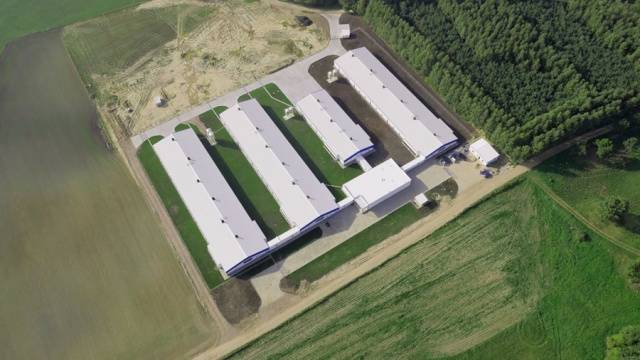
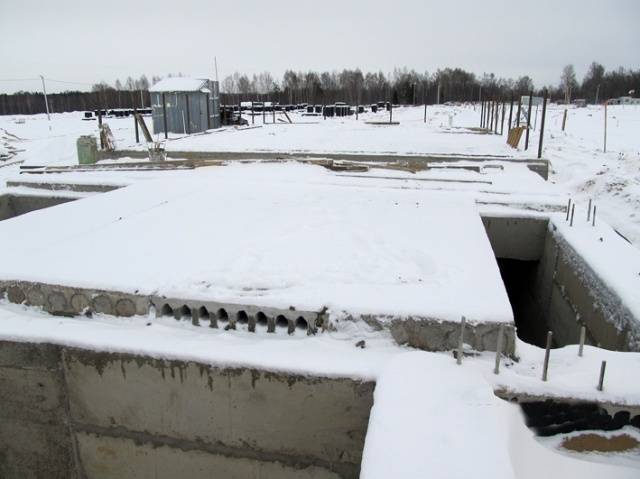
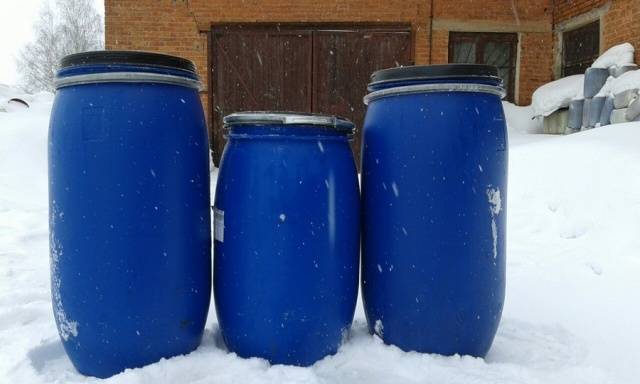
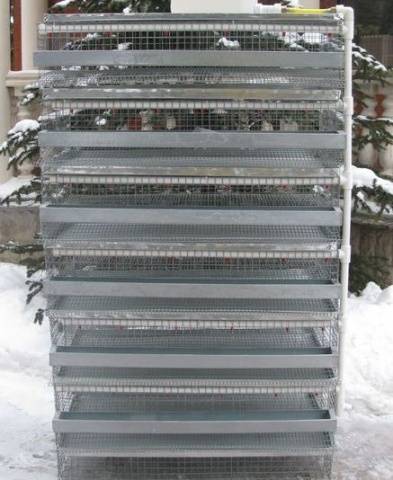
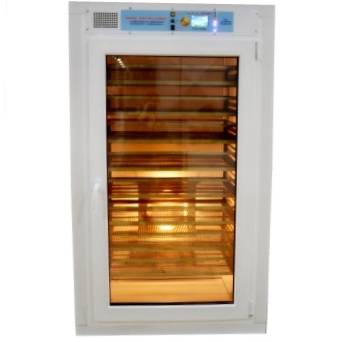
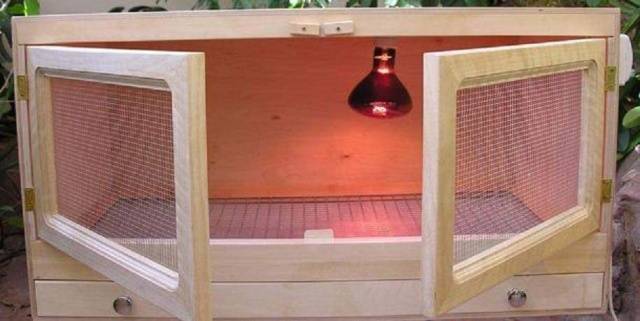
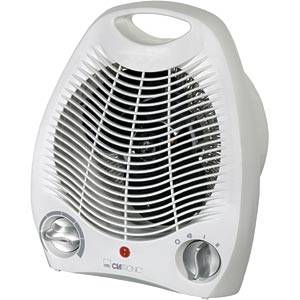
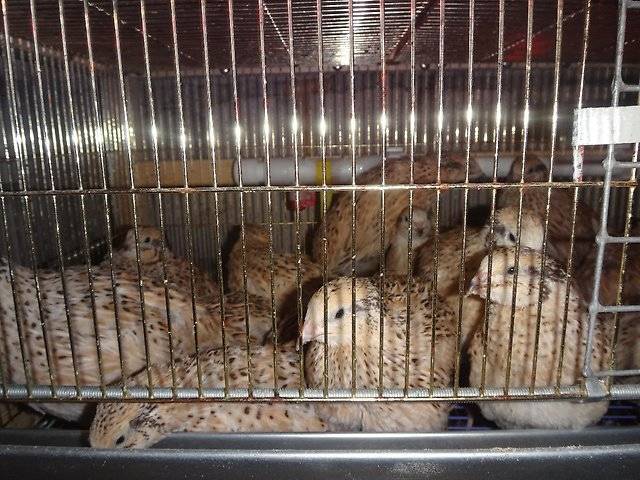
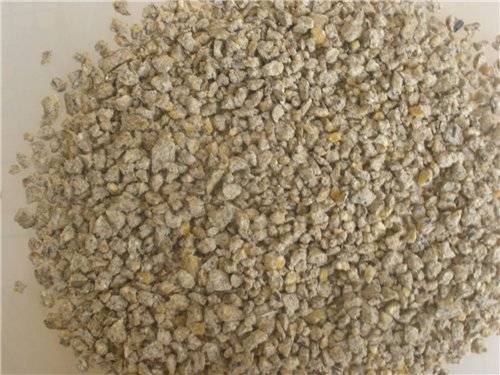
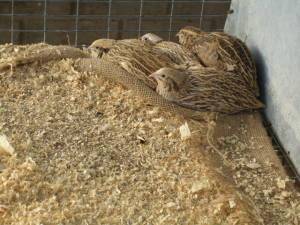
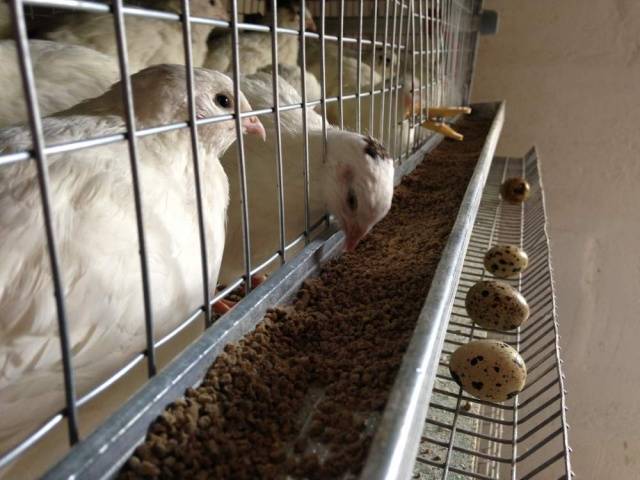
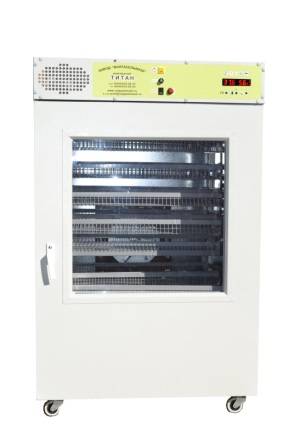
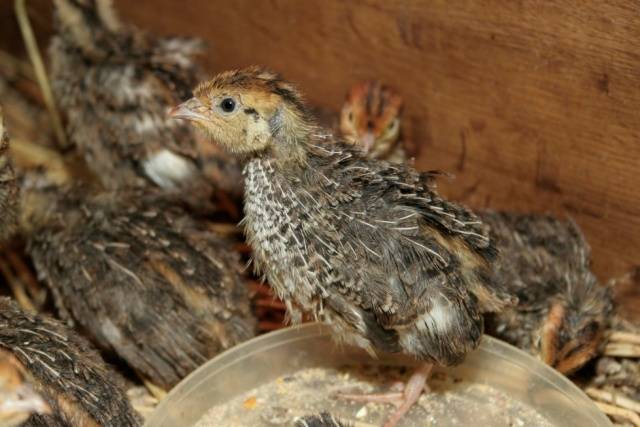
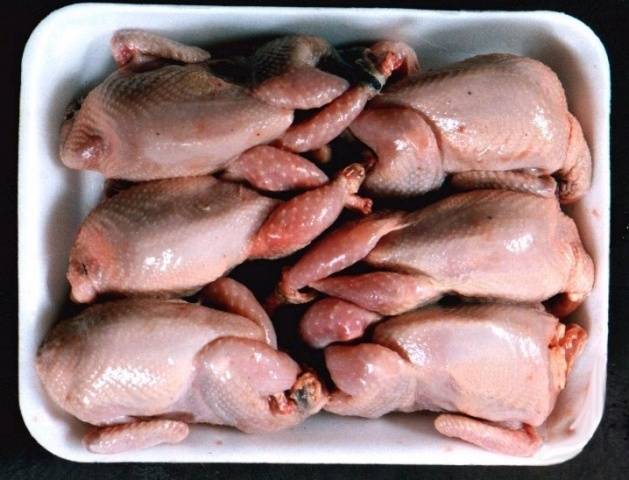



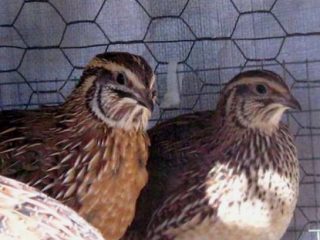
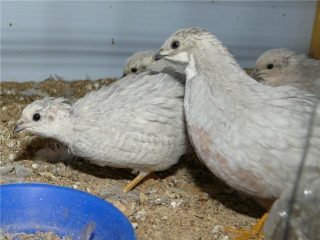
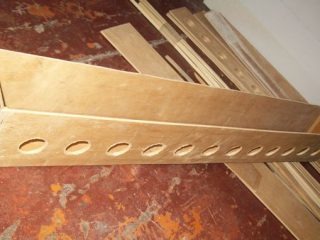

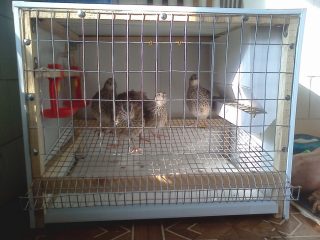
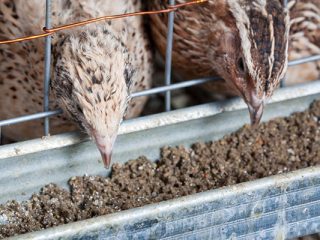

Correct article, oh correct. Quails are NOT PROFITABLE, do not breed them under any circumstances)))))) What for, what for we need extra competitors (for those who do not understand this is fierce sarcasm).
But seriously, poultry farming and quail farming in particular is quite a business. True, not everything is as rosy as advertising usually paints, but here you need to turn on your head and think clearly. It brings money, not mountains of gold, but it brings it.
The quail is such a small bird that you don’t have to go beyond the boundaries of private household plots (in any case, the law does not regulate the number of birds on a farmstead, either in pieces or in an assortment), therefore, with reasonable approaches, without creating problems for neighbors and other people, it is quite possible to keep 1000 birds on a farmstead Taking into account the average recommended stocking of 50 - 70 heads per grid square, provided that the cages are several floors high, on average 3-4 (where the room allows, five or six row heights are not large) That is. if you are not greedy, then we actually get 200-300 heads per square of floor. Thus, 1000 heads will take 5 squares of floor. Adequate full-cycle cages with a brooder, a layer of young animals, two egg and fattening cages with a total volume (excluding the brooder, which is for 200 heads) planting 200 heads made of stainless steel with a full set of drinking bowls and feeders of not the worst design costs 28 thousand Russian rubles (excluding delivery costs, of course). Thus, for a livestock of 1000 heads, 5 complete cages are needed, i.e. at retail we get this happiness for 140 thousand (and this is already with 5 brooders for essentially 1000 birds with heating lighting and other necessary equipment and regulators), and if you contact the manufacturer, it will cost 100 thousand (a small thing, but nice :)
Now next - the hatching egg. There are some difficulties here, but not of a financial nature. Finding a high-quality egg from an adequate farm with a healthy population and regular renewal of the parent flock, and even in quantities of 1000 or more eggs, is another problem. Now we believe that the typical output of quails is 85%. 75% is considered normal. That is. per 1000 hatch, you need to add at least 250 for flaws in the incubation of the fertilization and hatching.Normal suppliers, by the way, compensate for infertility in advance or after providing data on infertility.
Again, the cost of a hatching egg on normal farms is from 10 to 40 rubles. BUT! (the author again modestly kept silent about this) - this is the RETAIL price, i.e. for those who take a dozen others for themselves. If you take a THOUSAND pieces and even more, you have a discount and the more eggs, the greater the discount. You probably won’t be able to fall below ten per egg, but still. Here are the prices of the last delivery in spring 18. Quail Inc. egg Czech Republic (I will not write the manufacturer so as not to be considered an advertisement) guaranteed fertilization of 85% (they are laid down for a long journey and the loss of incubation properties of the egg because of this), when purchasing 2000 pieces, the price including delivery to the Urals turned out to be 40 rubles each. BUT! Half of this price is TRANSPORT COSTS, what can our greedy carriers do (((((
Delivery to St. Petersburg at a retail cost of 35 rubles/piece, when ordering from 250 pieces the price begins to fall cheerfully, when ordering 1000 pieces the price is 20 rubles/piece including delivery to the Urals.
The same prices are obtained for delivery from the Moscow region. In all three cases the order was the same Texas breed.
A local egg producer offers Inc. an egg with a guaranteed fertilization and compensation for no fertilization at all for 10 rubles per piece, taking into account delivery it turns out to be 12 rubles per piece - pharaohs.
Further food, I won’t recalculate the numbers from the article, I’m honestly too lazy (whoever wants to can resist it himself). stern. The author again modestly wrote RETAIL prices for feed.
For purchase volumes per 1000 head of farm, almost all suppliers give discounts
Here is a simple example: a retail starter from one very well-known international company costs 60 rubles/kg, when purchasing for 1000 heads of hatchery, the contract price becomes 40 rubles/kg.It’s the same story with the feedlot. and other manufacturers do the same. So yes, for the worst-case scenario we consider retail, but then you can (if you know how to communicate with people) negotiate regular deliveries at completely different prices, especially since there is a crisis now - the manufacturer has begun to think with his head (they themselves admitted).
Further on implementation. If you officially need to register private household plots, get a piece of paper from the settlement administration and from the veterinary service - this is if you sell products at retail. If you sell at the market, then only a veterinary conclusion about veterinary well-being in a given settlement (area) and a conclusion from the market’s veterinary service (but they will tell you what and how much). a certificate of veterinary well-being costs 100 rubles per piece. If we supply it to public catering, then the certificate is fno. Our veterinary service writes it for 150 rubles per batch.
Veterinary welfare once every three months, numbered for each batch.
In addition, we personally hand over our products, on our own initiative at our own expense, to a laboratory to identify infections dangerous to humans - but this is personal paranoia and it’s not necessary to do so. Analysis for coli and salmonellosis costs 150 rubles/test. Although initially they asked for 600, again a discount for wholesale and systematicity. At the same time, we are now known in the local health service and are more loyal to our veterinary certificates, which are discovered during checks in the same public catering and retail. It's a small thing, but it's nice. ))))
Well, selling through “word of mouth” does not require any proof at all, although for your peace of mind you can do your own research at your own expense. But here everyone decides for themselves.
About the fact that “people with money” do not invest money in the construction of quail farms and neither eggs nor meat can be found in the store.So this author is, again, THE FAT STORYTELLER! Go to any online site and you will be surprised there IS a quail egg and you can often find a quail carcass. Another thing is that these products are not in demand in every area. YES, and in light of the total impoverishment of the people, people have become very tight on food costs, so demand is falling not without this.
But here, who works with the buyer and what does he offer? No one promised an easy life)))))
Disadvantages and risks, as in any poultry farming:
while you gain experience, you will have bad hatching and death and other joys of incubation and the loss of young animals and the death of livestock from sometimes unpredictable reasons (for example, the manufacturer of a combination, in order to reduce the cost, cheated and the combination went bad, sometimes this is seasonal). Those. Yes, there is a risk of losing a large sum of money. There is also a subjective feature: for one person the quails live and live and the geese do not take root, while for another it may be the other way around or the bird does not want to live at all (believe it or not).
But IMHO you need to start with a relatively small herd, say 100 - 200 heads, and use them to work out all the technologies that will be used in your large farm. Understand the demand for products in your specific area, and then gradually increase the livestock to the calculated level.
Well, yes, the key to success is, first of all, a healthy, strong parent herd and using your own head, everything else will follow and will work out over time.
Well, don’t be greedy - there won’t be mountains of gold here without spending your own labor, if you don’t like to work with your hands, your head, analyze, predict, then most likely this is not your path.
Good luck.
Absolutely reasoned and correct answer.
Even a small farm (1500 heads) will give a minimum income of about 600 USD. per month, if you wish...
Thank you for your opinion on this article!) After reading the author, I was honestly upset, but your words encouraged me)))